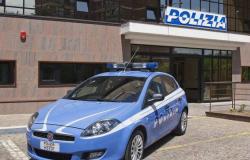During the first of the two centuries they separate us from the creation of Beethoven’s last symphony, on 7 May 1824 at the Porta Carinzia Theater in Vienna, its complete performances were relatively few and had an exceptional character. Even during the tour of the Wiener Philharmoniker in South America, conducted by Richard Strauss in 1923, the last movement, considered today its most characteristic part, was omitted: bringing a choir from Vienna would have been an incompatible cost and evidently they were not trusted too much of local resources.
In the initial years of the diffusion of the phonograph, recordings of orchestral music were very rare and unsatisfactory (the funny thing ensemble which is heard under Caruso’s voice is a later replacement of the piano originally used). That’s the first Beethoven symphony recorded in C minordirected in 1910 for the Odeon label by Friedrich Kalk, a Kapellmeister Hamburger active mainly in operetta and today practically unknown. There Not at “technically reproducible” appears in London in 1926, with Felix Weingartner on the podium; for market reasons the words of the ending were translated haphazardly into English, and they will also be translated nine years later in America, starring Leopold Stokowski. It only arrived in German in 1936, again directed by Weingartner, this time in Vienna but always for a record company across the Channel.
For a long time, therefore, the sonic knowledge of orchestral Beethoven occurred in ways different from the current ones. Four-hand piano reductions were used, without too many “artistic” pretensions and generally within the reach of good amateurs; for example, before going to listen to a symphony on Sunday afternoon at the Augusteo, about a century ago, the lawyer and parliamentarian from Bergamo Giuseppe Gavazzeni “rehearsed” it on the piano with his son Gianandrea, a fourteen-year-old music student in Santa Cecilia who he later recounted this habit, which today is almost incredible, in his own words.
Already towards the mid-nineteenth century the gap between the practice of “making music at home” and that of public concerts had become clear, culminating in the name of Franz Liszt. The great pianist considered himself first and foremost a composer and, not yet thirty years old, he began to try his hand at creating keyboard versions of Beethoven’s symphonies; but for the Not at he preferred to prepare, in 1850, one for two pianos. The Breitkopf und Härtel house of Leipzig, then the main music publisher in the Austro-German world, insisted a lot on having the transcription with two hands of it too. Liszt considered it “impossible” for a long time, and the complete series could only be printed in 1865. The illustrious editor declared that he had omitted very few notes from the originals.
In January 2022, the “visionary pianist” Maurizio Baglini he created a Beethoven-Liszt “marathon” in Pordenone: in one day the transcriptions of the first eight symphonies and the transcription for two pianos of the last one were performed. Ten Italian instrumentalists, very famous or known only to “experts”, played with great commitment and mostly memorable results. We had decided to listen to four symphonies, between the afternoon and the evening, but afterHeroic we rushed to look for tickets for all the remaining ones. It was an exhilarating day, which left us curious to listen to the other version “live”. Not at.
Among the many performances planned for the bicentenary of the symphony par excellence, which often seem to us to be “self-celebratory” of institutions, orchestras and directors, in our opinion the choice of the Lucca Classica Festival stands out, now in its tenth edition, and its artistic director Simone Soldati, to present the transcription for two hands of the Not at, converging with Maurizio Baglini’s desire to repeat in public the “titanic undertaking” already accomplished in past years. It is worth remembering that in 2015 the great symphony was the “highlight” of the first edition of the same Festival: the Modena Philharmonic Choir Luigi Gazzotti and the “conductorless” orchestra performed it at the Teatro del Giglio Spira mirabilis. We then had the impression that the free space in the center of the stage did not house the ghost of a conductor, but facilitated the conversation of the first parts among themselves and with the whole orchestra. “We never aim for a compromise between conflicting opinions expressed during the study: in the end we must recognize which is the best and adopt one or the other,” said one of the artists after that concert to underline the collective character of the realization. The choice to perform the Lisztian transcription obviously has a completely individual character, but even in this case the pianist must avoid the possible compromise between the expressive intention and the transcendent technical difficulty.
The famous, ambiguous empty fifths with which the symphony begins arise impalpably from nothing, until a high-pitched flicker leads to the first explosion of the everyone. Baglini’s extraordinary fingers are at the service of an extraordinary intellectual and physical penetration of music; the interaction of the voices re-composes the text moment by moment. The listener’s gaze focuses on his face; large gestures of his left arm “count”, almost as a director of himself, the pauses of silence, sometimes remarkably large and essential constituents of logic and emotion. The first Allegro ends, authentically «not too much, a little majestic»: now in place of the primordial chaos the world exists. In this movement Beethoven does not use trombones and this is also clearly perceptible from the piano performance.
Liszt probably reaches the pinnacle of his art as a re-composer in the explosion of orgiastic joy of the Scherzo. The score is not stingy with detailed instructions, but carrying them out is an arduous undertaking, which requires particular tonal skill on the keyboard, together with the promptness and precision of an “ideal machine”. Baglini has succeeded in an almost impossible task by combining a great variety ofattack on the key the perfect use of the pedals: very rapid resonances contributed to the richness of the percussive sound and, especially in passages with repeated notes, the play of the strings, three, two or one, recreated the internal differentiation of woodwinds and strings.
The duration of the Adagio tanto e cantabile strongly depends on the interpretative intention. Supporting Furtwänglerian widths on the piano, an instrument with an impulsive sound, would involve an abuse of resonances that Baglini, very correctly, avoided. The transcription itself does not indulge in the attempt to reproduce the mass of the strings here, the cantabile theme takes on a typically piano sound and the timbric imitation effect of the orchestra concerns almost exclusively the perorations of horns, trumpets and trombones in the last section of the movement.
The Finale follows without pause, with a attack immediately which does not fail to surprise, even after many decades, those who, like us, had known it Ninth Symphony from the old “thirty-three laps”, with the need to “turn the record” after the Adagio. The complexity of the piano writing now reaches its maximum, having to render, for long stretches, even the four or more voices of soloists and choir. The invitation to sing in the baritone register takes on, thanks to Baglini’s touch, a clarity and prominence that are often desired in vain from the human voice. The escaped which follows the Tenor’s Alla March is, in our opinion, the “impossible” section to transcribe with full effectiveness, such is the polyphonic richness of Beethoven’s writing, but the interpreter has fully realized its inexhaustible rhythmic tension. The subsequent Andante maestoso in G minor constitutes, on the other hand, one of the peaks of Liszt’s work and even seemed to us to enrich the score tonally. Baglini has masterfully combined singability and transparency of colors; if we are allowed to report a personal impression we had while listening and not based on the comparison of the two scores, during this passage it seemed to us that Mussorgsky (a great pianist, according to what his contemporaries say) had Liszt’s text well in mind, especially in the second section, Adagio ma non tanto, ma divoto, when, eight years after its publication, he composed the Catacombs (sic!) gods Paintings. The final sections of the symphony bring the need for total and spectacular virtuosity back to the foreground. The reverberation of the last chord fades into the very warm thanks of the public who fill the nave of Santa Maria dei Servi: unique, not too wide or high and with a coffered wooden ceiling (these characteristics contribute to unusually good acoustics for a church).
Upon his second return amidst thunderous applause, the pianist takes the floor and announces with emotion that, contrary to the logic that would exclude any encore after the Ninth Symphony, wishes to remember the figure of Marcello Parducci, for twenty years president of the Lucchese Musical Association, much loved by the many internationally renowned performers who he knew how to invite to the secluded area in which he operated. Baglini dedicates to him one of Bach’s most intimate chorales transcribed by Busoni «in the chamber style», I call upon you, O Lordplayed with appropriate severity (no less heartfelt words of regret and a commemorative encore had concluded the Scala Quartet’s concert in the same place a few hours earlier).
Thank you once again, “visionary”!
The review refers to the concert on April 25, 2024.
Vittorio Mascherpa







